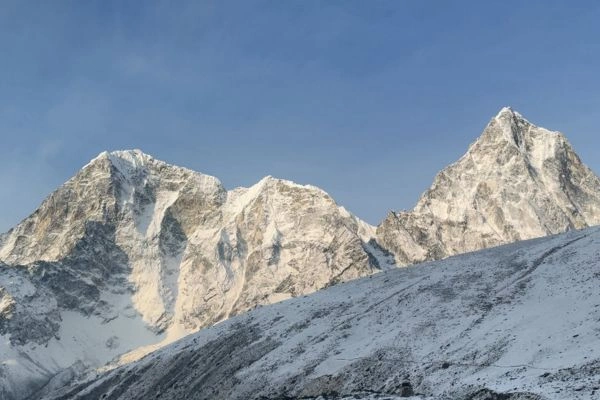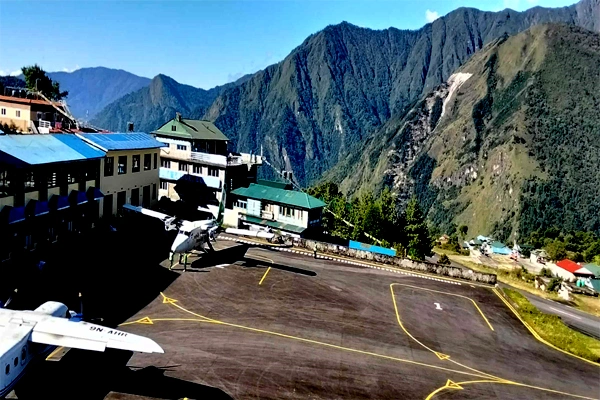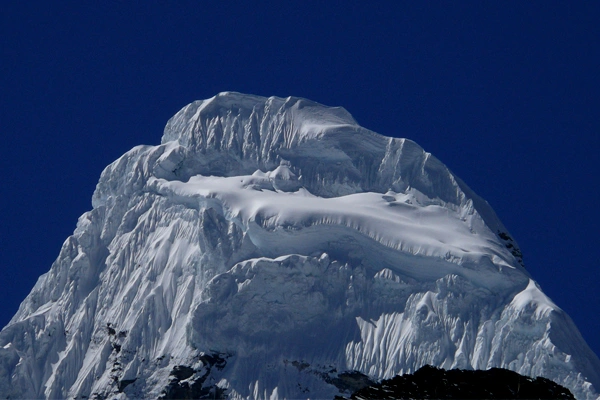The Annapurna Base Camp, nestled in the heart of the breathtaking Annapurna mountain range, is a destination that beckons adventurers from around the globe. This remote and awe-inspiring location promises an experience like no other. In this article, we will delve deep into the fascinating world of the Annapurna Base Camp and, more importantly, uncover the critical aspect of understanding Annapurna Base Camp altitude.
At an elevation of approximately 4,130 meters (13,549 feet) above sea level, Annapurna Base Camp, often abbreviated as ABC, is a renowned trekking destination in Nepal. It is ensconced within the Annapurna Sanctuary, a natural amphitheater surrounded by the towering peaks of the Annapurna Massif.
The trek to ABC takes you through diverse landscapes, from lush forests and terraced fields to alpine meadows and glacial moraines. Along the way, you'll pass through charming villages inhabited by the Gurung and Magar communities, allowing you to immerse yourself in the local culture.
Upon reaching the base camp, you are rewarded with a panoramic spectacle of some of the world's highest peaks, including Annapurna I (8,091 meters/26,545 feet) and Machapuchare (6,993 meters/22,943 feet). The sight of these colossal mountains, often bathed in the warm hues of sunrise, is a sight that etches itself into your memory forever.
Understanding the Annapurna Base Camp Altitude
While the beauty of Annapurna Base Camp is undeniable, its altitude poses challenges that cannot be ignored. Understanding altitude is not merely an academic exercise; it is a matter of safety and enjoyment for trekkers.
Altitude affects the human body in various ways, and being aware of these effects is crucial for a successful and safe journey. The air at higher altitudes contains less oxygen, which can lead to altitude-related illnesses if you ascend too rapidly. These illnesses, such as Acute Mountain Sickness (AMS), High-Altitude Pulmonary Edema (HAPE), and High-Altitude Cerebral Edema (HACE), can be life-threatening if not recognized and managed promptly.
In addition to health concerns, altitude also impacts your physical performance. Trekking at high altitudes can be physically demanding due to reduced oxygen levels, making it important to be prepared both mentally and physically.
In the sections that follow, we will delve deeper into the Annapurna Base Camp altitude, discuss altitude-related challenges, and provide valuable tips and insights to ensure your trek is not only memorable but safe as well.
Annapurna Base Camp Altitude
The heart of our Annapurna adventure lies in understanding the altitude profile of this extraordinary trek. As you ascend into the Annapurna Base Camp trek, the terrain and altitude undergo remarkable changes. Let's break down this fascinating journey:
A. Starting Point: Pokhara
Your journey to Annapurna Base Camp commences in the charming lakeside city of Pokhara, often called the 'Gateway to the Annapurna.' Situated at an elevation of around 827 meters (2,713 feet), Pokhara is the perfect place to prepare for your trek. Here, you can purchase trekking supplies, enjoy the serene Phewa Lake, and savor delicious Nepali cuisine before embarking on your adventure.
B. Trekking Route Options
When it comes to trekking to Annapurna Base Camp, you have two main route options:
Classic ABC Trek: This is the most common and well-trodden path. It takes you through picturesque villages, and rhododendron forests, and offers breathtaking mountain views. The classic trek usually starts from Nayapul, which is accessible by road from Pokhara.
Alternative Routes: For those seeking a less-traveled path, there are alternative routes that can add uniqueness to your journey. Some options include the Khopra Danda Trek and Mardi Himal Trek, which can be combined with the ABC Trek or explored separately.
C. Day-wise Altitude Gains
The trek to Annapurna Base Camp involves a gradual ascent, allowing your body to acclimatize to the increasing altitude. Let's take a day-by-day look at the altitude gains on the classic ABC trek:
Day 1: Pokhara to Tikhedhunga
Starting Altitude: Pokhara (827 meters/2,713 feet)
Final Altitude: Tikhedhunga (1,495 meters/4,905 feet)
Day 2: Tikhedhunga to Ghorepani
Starting Altitude: Tikhedhunga (1,495 meters/4,905 feet)
Final Altitude: Ghorepani (2,874 meters/9,429 feet)
Day 3: Ghorepani to Tadapani
Starting Altitude: Ghorepani (2,874 meters/9,429 feet)
Final Altitude: Tadapani (2,590 meters/8,497 feet)
Day 4: Tadapani to Chhomrong
Starting Altitude: Tadapani (2,590 meters/8,497 feet)
Final Altitude: Chhomrong (2,170 meters/7,119 feet)
Day 5: Chhomrong to Bamboo
Starting Altitude: Chhomrong (2,170 meters/7,119 feet)
Final Altitude: Bamboo (2,335 meters/7,661 feet)
Day 6: Bamboo to Deurali
Starting Altitude: Bamboo (2,335 meters/7,661 feet)
Final Altitude: Deurali (3,230 meters/10,597 feet)
Day 7: Deurali to Annapurna Base Camp
Starting Altitude: Deurali (3,230 meters/10,597 feet)
Final Altitude: Annapurna Base Camp (4,130 meters/13,549 feet)
The gradual ascent and well-planned itinerary of the classic ABC trek give your body time to adapt to the increasing altitude, reducing the risk of altitude-related illnesses. As you venture deeper into the Annapurna Base Camp, the air gets thinner, the temperatures drop, and the landscapes become more surreal.
What is the altitude of Annapurna Base Camp?
Annapurna Base Camp (ABC) is situated at an elevation of approximately 4,130 meters (13,549 feet) above sea level. This high-altitude destination offers mesmerizing panoramic views of the surrounding peaks, making it a favorite among trekkers and nature enthusiasts.
How long does it take to reach Annapurna Base Camp?
The duration it takes to reach Annapurna Base Camp can vary depending on your chosen trekking route, starting point, and individual trekking pace. On the classic ABC trek, which starts from Nayapul, it typically takes about 7 to 12 days to reach the base camp, depending on your itinerary and acclimatization breaks. The journey allows for a gradual ascent, ensuring a safe and enjoyable trekking experience. Keep in mind that it's essential to acclimatize properly and take rest days as needed to prevent altitude-related issues and make the most of your trek.
Acclimatization Strategies for the ABC Trek
Acclimatization is the key to conquering the heights of Annapurna Base Camp safely and successfully. One of the fundamental principles of altitude trekking is a gradual ascent. Rushing to higher altitudes without allowing your body to acclimatize can lead to altitude sickness and can ruin your trekking experience. By taking it slow, you give your body time to adjust to the reduced oxygen levels in the air. The classic ABC trek itinerary, as mentioned earlier, is meticulously designed to facilitate a gradual ascent.
Hence, rest days are an integral part of any high-altitude trek. These days are strategically placed in your itinerary to allow your body to recover and acclimatize. On rest days, you can explore nearby villages, take short hikes, or simply relax at your lodge. These breaks are not only beneficial for your physical well-being but also offer opportunities to immerse yourself in the local culture and natural beauty.
Additionally, proper hydration and a balanced diet play a significant role in altitude acclimatization. Dehydration can exacerbate the effects of altitude, so it's essential to drink plenty of water throughout your trek. Additionally, maintaining a diet rich in carbohydrates and protein provides your body with the necessary energy for the demanding trek.
These strategies, when combined, enhance your chances of acclimatizing successfully, allowing you to enjoy the stunning landscapes and unique experiences that Annapurna Base Camp has to offer.
How does the high altitude at Annapurna Base Camp affect trekkers?
The high altitude at Annapurna Base Camp can have various effects on trekkers due to reduced oxygen levels. Common altitude-related issues include shortness of breath, fatigue, headaches, and difficulty sleeping. It's essential to acclimatize gradually to minimize these effects and prevent more severe conditions like Acute Mountain Sickness (AMS).
Is altitude sickness preventable at Annapurna Base Camp?
While altitude sickness cannot be completely prevented, its risk can be significantly reduced by following acclimatization guidelines. These include ascending slowly, taking rest days, staying hydrated, and recognizing the symptoms of altitude sickness to seek medical attention if necessary.
Are there medical facilities at Annapurna Base Camp?
While there are basic medical facilities at Annapurna Base Camp, they are limited. It's crucial to carry your personal medications and first-aid supplies. In case of severe altitude sickness or emergencies, evacuation options are available, but they may involve trekking back to lower altitudes or helicopter rescue, depending on the situation.




